Gentle jungle noises of birds and bugs faded as I walked into the large, damp cavern. Green-tinted light reflecting off the dark rain forest canopy suddenly turned into the darkness of a cave with black walls, lit only with the occasional yellow glow of a man-made light. The stillness of the cave was suddenly broken by the noise of a large group of tourists coming in behind me. I overheard someone ask their tour guide a question:
“How long did it take to make this cave? Who made it?”
“Just hours to make it . . . None of this is man-made. All the lava tubes were made by lava flows” The tour guide replied.
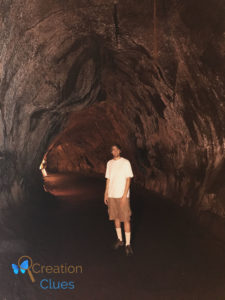 Lava tubes are caves made by lava flows of a volcano. They are made by a special type of lava flow. There’s a lot of variety in different types of lava and volcanic rock. Many factors come into play for the making of a lava rock, but the chemistry of the magma is the most important. Magma and lava are the same thing – only we use the term “magma” when it’s underground and “lava” when it’s on the surface. As hot magma makes its way to the surface, it melts and mixes with other rock in the way. Sometimes the surrounding rock melts into the magma, and other times it will leave partially melted edges in the rock or a chunk of that older rock will get carried away with the magma.
Lava tubes are caves made by lava flows of a volcano. They are made by a special type of lava flow. There’s a lot of variety in different types of lava and volcanic rock. Many factors come into play for the making of a lava rock, but the chemistry of the magma is the most important. Magma and lava are the same thing – only we use the term “magma” when it’s underground and “lava” when it’s on the surface. As hot magma makes its way to the surface, it melts and mixes with other rock in the way. Sometimes the surrounding rock melts into the magma, and other times it will leave partially melted edges in the rock or a chunk of that older rock will get carried away with the magma.
This melting and mixing of rock in between the magma and its exit will change the chemistry of the magma. Geologists call this “magma evolution”. Remember that the word “evolution” just means “change” – the magma changes have absolutely nothing to do with molecules turning into people. On volcanoes like Mount St. Helens based on land, the magma has to go through a lot of continental rock, that contains a lot of quartz and other minerals rich in silica. This change in the magma makes for a very explosive eruption and generally relatively light colored lava rocks.
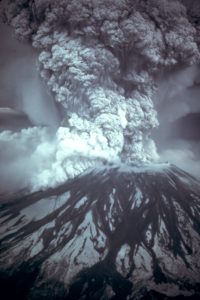
Now take a look at Hawaii – since this group of volcanoes forms in the ocean, it goes through a different type of rock. This oceanic rock is heavier than continental rock. It doesn’t have much quartz or other silica, and instead has more iron and other metals in its chemistry. Hawaiian volcanoes have a different style of eruption – these eruptions are still very dangerous, but the lava flows more like a flood, rather than exploding like Mount St. Helens. Hawaiian volcanic rock is usually darker and heavier. It really makes a lot of sense if you think about it. Imagine hitting against glass – it may stand firm for a while, but with enough pressure it will shatter. However, if you did the same thing to a sheet of metal, it would bend and warp. Volcanoes like Mount St. Helens explode because that rock and the magma underneath it has silica in it, like glass, while Hawaii has a lot of “bendable” metal in it (Read Birth of Hawaii to learn about the formation of this island chain).
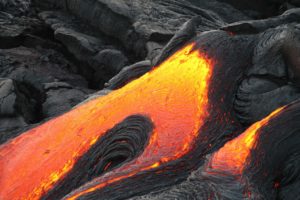
Public domain copyright free image from pixabay.com
Today, let’s explore two of the different types of rocks made by flowing lava in Hawaii. They both have originally Hawaiian names – “Pahoehoe” (pronounced “pa-hoy-hoy”) and “’A’a” (pronounced like “Ah! Ah!”, as if you were expressing pain). These two types of rocks actually have the same chemistry, but there are a few things that make them different. Pahoehoe is very smooth and runny. It looks a little like a boiling pot of thick, creamy soup. This is the stuff that really “oozes” and creates flowing rivers of lava. Pahoehoe creates lava tubes when a flowing “stream” of lava is exposed to the air, which hardens the top and sides of the stream, creating a hard crust or skin. Inside, this leaves a nice insulated tunnel that lava can keep flowing though and not be exposed to the air that would “freeze” it into solid rock. Once the lava stops flowing, it sometimes leaves an empty lava tube. Many of these are very large and look a lot like caves.
While pahoehoe is runny and smooth, ‘a’a is very jagged and bumpy. If you walk on it, it can easy tear up shoes because the surface is so sharp, unlike smooth Pahohoe. The name “a’a” can remind you of a person walking in pain and crying “Ah! Ah!” as they walk along the sharp, jagged surface. Just like bubbling soda contains carbon dioxide gas, lava also contains carbon dioxide and other gasses, like water vapor. Pahoehoe has more gas and is hotter than ‘a’a. While pahohoe flows, ‘a’a lava flows move in more of a “lumping” and rolling motion. Below are a couple of short YouTube videos showing real pahoehoe and ‘a’a lava in motion.

Lava can teach us a lot about stubbornness. Do you ever struggle with stubbornness? I certainly do. Lava is a good reminder to me that I want to be more like Pahoehoe of Hawaii and less like exploding lava rock of Mount St. Helens. The more stiff and stubborn I am, the more I hurt those around me. I can still be determined and make a difference, changing the landscape around me if I choose to do it more gently, like Hawaiian Pahoehoe. So how can we change what kind of “lava” comes out of our hearts? The same way magma changes before it reaches the surface – by melting and absorbing the right things. The Word and character of God are the best things we can absorb in our hearts, before our magma of thoughts and ideas ever reach the surface as actions and words. May you absorb more of Him and His Word every day and learn to be more like Pahohoe.
©2017 Sara J. Mikkelson
Read previous article about Hawaii: Hawaii – All Three Types of Science
References:
- Marshark, Stephen. Earth: Portrait of a Planet. , Third Edition. 2008. W. W. Norton & Company, Inc.
- Hazlett, Richard. Hyndman, Donald. Roadside Geology of Hawaii. 1996. Sixth printing, April 2015. Mountain Press Publishing Company. Missoula, Montana. USA
- Video: “CSAV Hawaii: Pahoehoe on the Pali”. Center for the Study of Active Volcanoes. University of Hawaii at Hilo. Retrieved 5-3-17. https://www.youtube.com/watch?v=0zVSWQrCgcM
- Video: “CSAV Hawaii: Volcanic Eruption with Aa”. Center for the Study of Active Volcanoes. University of Hawaii at Hilo. Retrieved 5-3-17. https://www.youtube.com/watch?v=Z9iW_oXMBB8

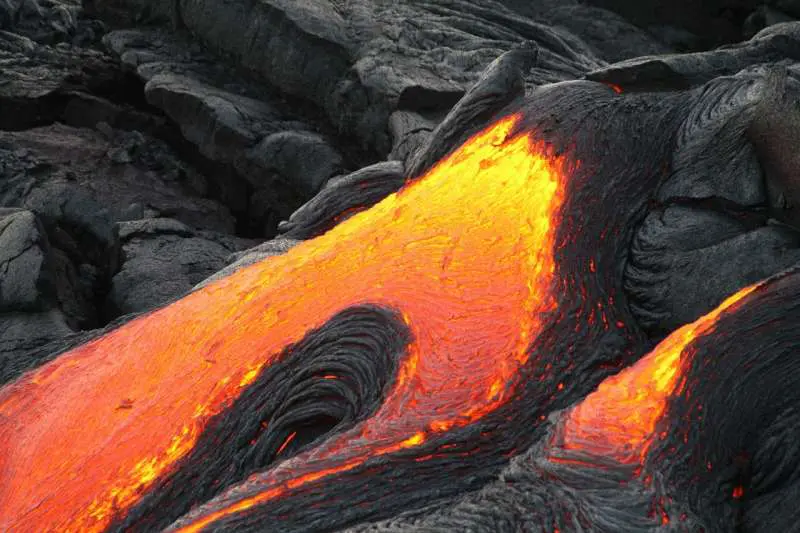



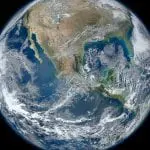

You’re a wonderful teacher Sara. Thank you for sharing about volcanoes and lava. And thank you also for giving me ways to remember the differences about them too. That was a great biblical analogy about our thoughts and Christ like behavior, I know I’ll remember it because of the visual examples you painted in my mind. Blessings.
Thank you for the encouraging words, Suzie! God bless you!